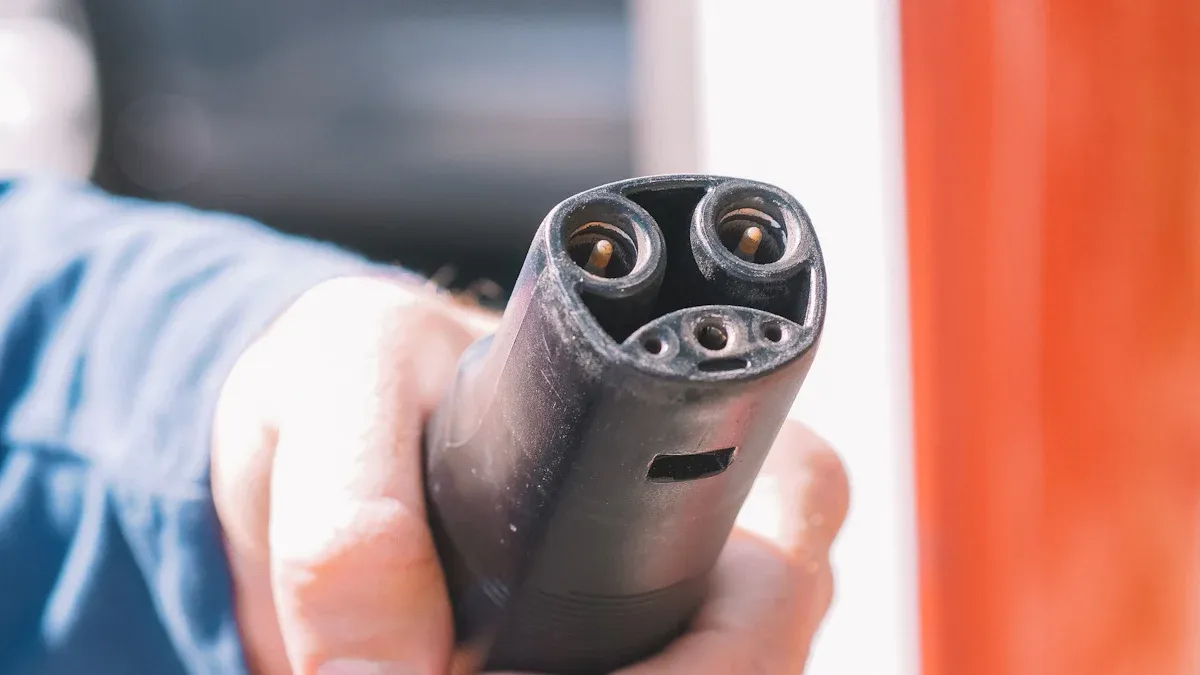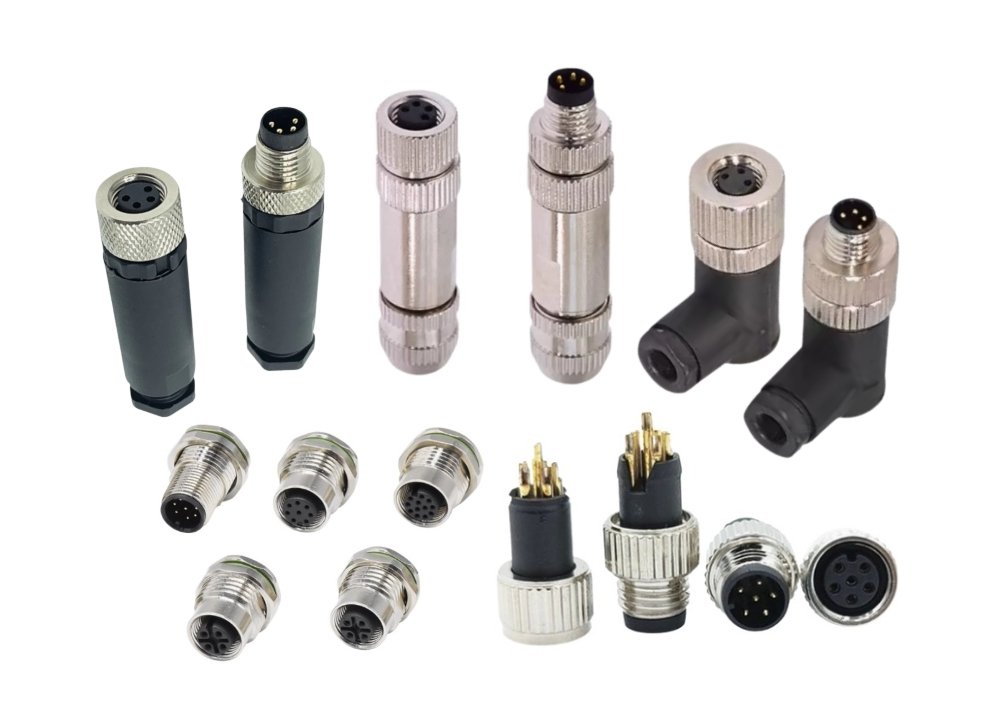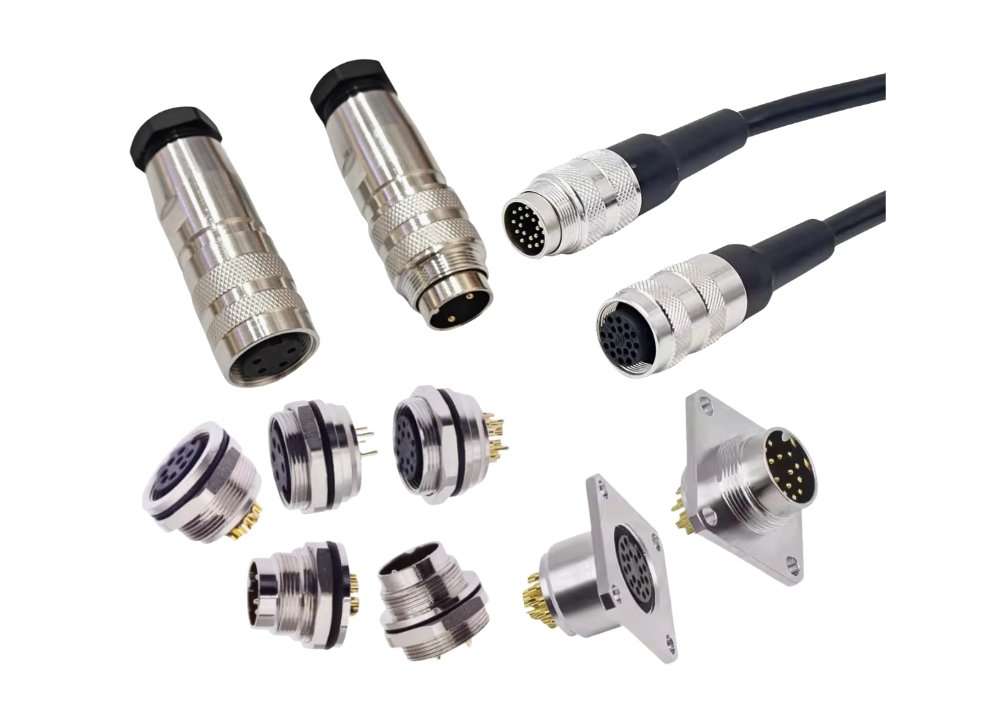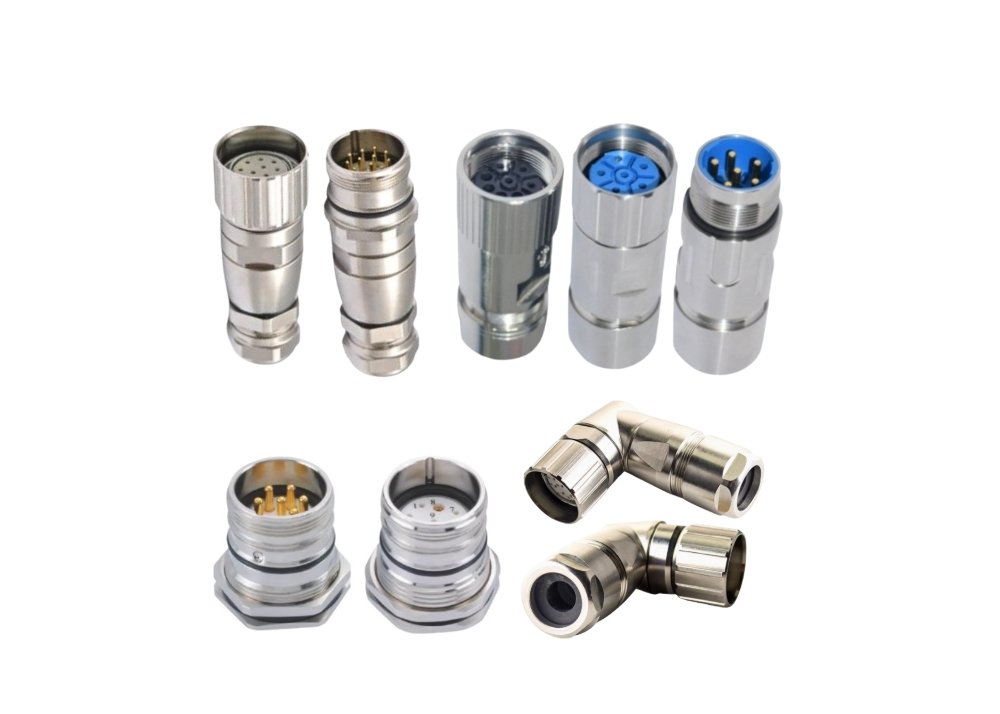
Rugged IP67 connectors deliver reliable performance in the harshest environments. These connectors protect sensitive electronics from water, dust, and other contaminants, making them ideal for applications where reliable connections are critical. Industries trust rugged IP67 connectors with IATF 16949 and UL 94V-0 certifications, ensuring stringent quality and material safety. Water exposure, shock, and vibration challenge connections, but robust designs like the M8 connector and Type B connector consistently provide reliable results. Connector factory processes focus on building components that withstand extreme conditions and repeated water immersion.
Understanding IP67 Connectors and Their Significance
What Does the IP67 Rating Mean?
Ingress Protection Explained
The IP67 rating stands as a benchmark for harsh environment connectors. The “IP” in IP67 refers to Ingress Protection, a standard defined by IEC-60529. This rating system measures how well connectors resist the intrusion of solid objects and liquids. The first digit, “6,” means the connector is completely dust-tight, blocking all solid particles. The second digit, “7,” indicates protection against water immersion up to 1 meter for 30 minutes. This level of defense ensures that sensitive electronics remain safe even when exposed to challenging environments.
Water and Dust Resistance Levels
IP67 connectors deliver robust protection against both dust and water. These connectors use advanced sealing mechanisms, such as rubber gaskets or O-rings, to prevent moisture ingress. Locking mechanisms further secure the connection, maintaining integrity under vibration and movement. The table below compares IP67 with other common ratings:
| IP Rating | Dust Protection | Water Protection | Typical Use Case |
|---|---|---|---|
| IP65 | Dust-tight | Low-pressure water jets, light rain | Light outdoor exposure |
| IP66 | Dust-tight | Powerful water jets, no immersion | Harsh outdoor conditions |
| IP67 | Dust-tight | Temporary immersion up to 1 meter for 30 minutes | Devices exposed to submersion and dust-heavy environments |
| IP68 | Dust-tight | Submersion beyond 1 meter, longer duration | Underwater sensors, waterproof cameras |
| IP69K | Dust-tight | High-pressure, high-temperature water jets | Food processing, automotive cleaning |
Why IP67 Matters for Harsh Environment Connectors
Real-World Implications
Harsh environment connectors must withstand more than just occasional splashes. In industries like agriculture, mining, marine, and outdoor telecommunications, connectors face dust, dirt, sand, and water immersion. IP67 connectors protect internal components from these threats, ensuring reliable operation. They also provide strain relief, reducing cable damage and maintaining connection integrity during vibration or shock. Materials such as glass-filled nylon and polyurethane enhance durability and temperature resistance, making these connectors suitable for demanding environments.
Note: IP67 connectors do not function underwater but remain operational after temporary immersion, making them ideal for unpredictable conditions.
Comparison to Other Ratings
While IP67 connectors offer complete dust protection and temporary water immersion, some applications require even greater resilience. IP68 connectors allow for deeper and longer submersion, meeting the needs of underwater drilling or extended outdoor use. IP69K connectors withstand high-pressure, high-temperature water jets, making them essential for food processing and automotive systems that undergo frequent washdowns. Each rating addresses specific environmental challenges, but IP67 remains the standard for most harsh environment connectors due to its balance of dust and water resistance.
Key Features of Rugged IP67 Connectors

Robust Construction Materials
Metal vs. High-Grade Plastics
Rugged IP67 connectors rely on carefully selected materials to deliver strong protection and reliable connections in extreme environments. Manufacturers often choose metals such as stainless steel, aluminum, and brass for connector housings. These metals provide superior mechanical strength, corrosion resistance, and durability, making them ideal for outdoor and industrial applications. High-grade plastics like nylon, PBT, and PPA offer good electrical insulation and chemical resistance. These plastics also reduce weight and cost, but they may be more susceptible to heat deformation and UV degradation.
| Material Type | Examples | Mechanical Properties & Advantages | Limitations & Considerations |
|---|---|---|---|
| Contact Materials | Copper alloys | Cost-effective, suitable for controlled environments | Limited corrosion resistance |
| Gold-plated | High reliability, excellent corrosion resistance | Higher cost | |
| Silver-plated | Balanced electrical performance and cost | Less durable than gold plating | |
| Housing Materials | Plastics (Nylon, PBT, PPA) | Good electrical insulation, chemical resistance, cost-effective | Susceptible to heat deformation and UV degradation |
| Metals (Aluminum, Stainless Steel) | Superior mechanical strength, corrosion resistance, durability | Heavier and more expensive than plastics |
Tip: Metal housings are best for harsh industrial and outdoor environments, while plastic housings suit applications where weight and cost matter most.
Corrosion and Impact Resistance
Metals such as stainless steel and aluminum resist corrosion from water, chemicals, and salt spray. This resistance ensures connectors maintain performance in marine, offshore, and outdoor settings. High-performance polymers like PEEK and PTFE also offer excellent chemical resistance and mechanical properties. Rubber and silicone components add flexibility and help absorb impacts. These materials allow rugged IP67 connectors to withstand mechanical shocks, drops, and repeated handling without losing integrity.
Advanced Sealing Technologies
Gaskets and O-Rings
Gaskets and O-rings play a critical role in achieving the IP67 rating. Manufacturers use rubber or silicone to form tight barriers that prevent water from entering internal connection points. These seals protect against moisture intrusion, which is essential for reliable connections in wet or submerged environments. Gaskets and O-rings also shield electrical contacts from dust and contaminants, reducing the risk of short circuits and damage.
Locking Mechanisms
Locking mechanisms secure the mating surfaces of connectors, maintaining a consistent seal even during vibration or movement. Many rugged IP67 connectors feature threaded couplings, bayonet locks, or snap-fit designs. These mechanisms prevent accidental disconnection and ensure the sealing elements remain compressed, preserving water and dust protection. Overmolding and sealing boots at cable exits provide additional barriers, while hermetic seals offer gas-tight, moisture-impermeable protection for sensitive applications.
- Rubber gaskets and sealants ensure tight sealing.
- O-rings prevent ingress at mating surfaces.
- Sealing boots and grommets protect cable exits.
- Overmolding delivers strain relief and permanent environmental barriers.
- Multi-stage seals and conformal potting enhance protection in extreme conditions.
Resistance to Environmental Stressors
Water and Dust Protection
Rugged IP67 connectors deliver total dust ingress protection and resist temporary immersion in water up to 1 meter for 30 minutes. These connectors use robust materials and advanced sealing to block dust, dirt, and water from reaching internal contacts. This strong protection makes them suitable for outdoor LED lighting, wind energy, and power distribution systems.
Vibration and Shock Resistance
Connectors in harsh environments must withstand constant vibration and mechanical stress. Metal housings, reinforced plastics, and flexible sealing elements absorb shocks and prevent loosening. Locking mechanisms keep connections secure, even in high-vibration settings like industrial automation or transportation.
Temperature Extremes
Rugged IP67 connectors operate reliably across a wide temperature range. Some models, such as the TE Connectivity Heavy Duty Sealed Connector Series, function from -40°C up to 140°C. Others, like the WEIPU SA1610P/S Cable connector, perform well from -40°C to +85°C. This broad range ensures connectors remain reliable in both freezing and high-heat environments.
Chemical and UV Resistance
Outdoor and industrial applications expose connectors to chemicals, oils, and UV radiation. High-performance polymers and corrosion-resistant metals protect against these hazards. Rubber and silicone seals maintain flexibility and sealing performance, even after prolonged exposure to sunlight or harsh chemicals. These features ensure that rugged IP67 connectors, as well as ip68 connectors and ip69k connectors, continue to deliver reliable connections in the most demanding conditions.
- Complete protection against dust particles
- Water immersion resistance up to 1 meter depth
- Durability against extreme temperatures and UV radiation
- Mechanical stress and impact resistance
- Chemical exposure resistance
- Compliance with industrial standards and certifications
Note: Rugged IP67 connectors, ip68 connectors, and ip69k connectors are engineered for reliable performance in environments where water, dust, vibration, and chemicals threaten electrical connections.
Certifications and Quality Assurance for Connectors for Harsh Environments
Industry Standards and Testing
IP67 Certification Process
Manufacturers must meet strict requirements to certify harsh environment connectors with an IP67 rating. The International Electromechanical Commission (IEC) established the IP rating system under IEC 60529. Independent organizations such as UL conduct tests that simulate real-world conditions. These tests include pressure decay, vacuum leak, and tracer gas leak procedures. The process verifies that connectors resist dust ingress and withstand water immersion up to one meter for 30 minutes. Testing takes place in sealed chambers using pressure differentials to detect leaks. The water submersion test lasts about 30 minutes. The timeline for certification depends on product complexity and lab schedules. Manufacturers prepare samples, submit them to certified labs, and receive the IP rating after assessment. IP67-rated devices offer water resistance but should not be submerged regularly or for extended periods.
Tip: Contact a certification agency for precise timelines and requirements for harsh environment connectors.
Additional Relevant Standards (UL, IEC, RoHS)
Connectors for harsh environments must comply with additional standards beyond IP67. UL certification confirms electrical safety and fire resistance. IEC standards define performance and durability under environmental stress. RoHS certification ensures that connectors do not contain hazardous substances, supporting environmental safety. CE and TUV certifications further verify compliance with European and international regulations. These certifications require rigorous testing and documentation, legitimizing the claims made by manufacturers.
| Standard | Purpose | Benefit |
|---|---|---|
| UL | Electrical safety, fire resistance | Ensures safe operation in industrial settings |
| IEC | Ingress protection, durability | Confirms dust and water resistance |
| RoHS | Restricts hazardous substances | Promotes environmental safety |
| CE/TUV | European/international compliance | Validates product for global markets |
Quality Control in Manufacturing
Batch Testing and Inspection
Manufacturers implement batch testing to improve the reliability of harsh environment connectors. Routine tests assess product quality stability during production. Acceptance tests verify compliance with technical specifications after assembly. Reliability tests expose connectors to environmental stress, confirming long-term durability. Environmental testing subjects connectors to humidity, salt spray, and temperature extremes. Vibration and shock testing applies forces up to 20G to ensure secure connections. Thermal cycling between -40°C and 150°C confirms resistance to temperature swings. Compliance with standards such as MIL-STD-810 and IEC 60529 ensures connectors meet harsh environment requirements.
| Test Type | Purpose and Description | Contribution to Reliability in Harsh Environments |
|---|---|---|
| Degree of Protection (IP) Tests | Verify protection against dust, water, and contact according to DIN 40050-9/60529 standards. | Ensures connectors resist ingress of harmful substances, maintaining function. |
| Vibration Tests | Apply sinusoidal vibrations, resonance search, mechanical shock, broadband noise (IEC 60068-2-6). | Confirms connectors withstand mechanical stresses without damage or failure. |
| Corrosion Tests | Salt-spray, Kesternich (SO2 atmosphere), condensation climate, flowing gas mix (IEC 6988). | Assesses resistance to corrosive environments, ensuring long-term contact quality. |
| Climate Tests | Heat, cold, humidity, temperature shock (IEC 60512-11-4). | Simulates extreme temperature changes and humidity to verify durability. |
| Temperature Shock Tests | Rapid cycling between temperature extremes to simulate industrial process conditions. | Ensures connectors tolerate sudden temperature changes without performance loss. |
Traceability and Documentation
Manufacturers use digital process management and full-process quality control systems. These systems track material properties, stamping accuracy, and surface treatment. Intelligent detection systems monitor production continuously. Documentation records every step, ensuring traceability from raw materials to finished products. This approach guarantees consistent quality and supports long-term reliability. High-quality materials and precision-engineered seals ensure water-tight connections. Rigorous testing and certification verify electrical, mechanical, and environmental performance. Manufacturers maintain records to demonstrate compliance with industry standards and support future audits.
Note: Comprehensive documentation and traceability help manufacturers identify and correct issues quickly, ensuring harsh environment connectors meet the highest standards.
Real-World Applications of Rugged IP67 Connectors in Extreme Conditions

Industrial and Manufacturing Settings
Heavy Machinery and Automation
Industrial automation relies on rugged IP67 connectors to ensure reliable operation in environments filled with dust, vibration, and moisture. These connectors support critical equipment such as robotic arms, industrial sensors, and control panels. Their robust construction and advanced sealing prevent water and dust ingress, which can cause costly downtime or equipment failure. Manufacturers often select connectors with threaded locking or bayonet mechanisms to maintain secure connections during constant movement and shock. The use of weatherproof cable connectors in these settings helps protect sensitive electronics, ensuring uninterrupted data transfer and power delivery.
Outdoor Installations
Outdoor industrial installations present unique challenges, including exposure to rain, mud, and temperature extremes. Rugged IP67 connectors provide essential protection for equipment like factory-floor machinery, test systems, and sensor arrays. Their dust-tight and waterproof design allows them to withstand temporary immersion in water, making them suitable for installations where flooding or heavy rain may occur. These connectors also feature UV-resistant housings and strain relief, which extend service life in rugged outdoor settings.
Marine and Offshore Environments
Saltwater Exposure
Marine and offshore environments demand connectors that resist corrosion and maintain electrical integrity despite constant exposure to saltwater and harsh elements. IP67 connectors use corrosion-resistant materials such as stainless steel or brass, which endure salt spray and prevent degradation. Their robust sealing and locking mechanisms reduce the risk of accidental disconnection, supporting reliable operation of marine electronics and offshore equipment.
Submersible Applications
Submersible applications require connectors that can withstand temporary immersion in water without compromising performance. IP67 connectors have demonstrated the ability to endure up to 720 hours of salt spray testing, proving their long-term corrosion resistance. This durability reduces maintenance needs and extends equipment service life from just a few years to over a decade when properly maintained. Operators benefit from improved safety, reduced electrical failures, and lower operational costs in extreme conditions.
Outdoor and Harsh Weather Use
Telecommunications and Networking
Telecommunications infrastructure often faces harsh outdoor environments, including rain, dust, and temperature fluctuations. Rugged IP67 connectors ensure reliable data and power transmission for cellular junction boxes, mobile towers, and broadband communication systems. Their dust-tight and waterproof features prevent moisture ingress and corrosion, reducing the risk of short circuits and equipment failure.
Renewable Energy Installations
Renewable energy systems, such as wind turbines and solar farms, operate in exposed locations where extreme conditions are common. IP67 connectors protect electrical connections from water, dust, and UV radiation, ensuring consistent performance. Their robust design and secure locking mechanisms maintain sealing integrity, even during strong winds or heavy precipitation. These connectors support the long-term reliability and efficiency of renewable energy installations.
Note: Non-IP-rated connectors lack the protection needed for these demanding environments, making rugged IP67 connectors the preferred choice for safety and operational success.
Medical and Laboratory Environments
Sterilization and Cleaning
Medical and laboratory environments demand connectors that withstand rigorous sterilization and cleaning procedures. Staff frequently expose equipment to disinfectants, autoclaving, and chemical agents to maintain hygiene and prevent contamination. IP67 connectors provide dust-tight and waterproof sealing, meeting the requirements for temporary immersion in water. Manufacturers design these connectors to resist moisture ingress and exposure to fluids, which can cause corrosion or connection failures. Technologies such as EDAC’s E-Seal epoxy sealing offer complete waterproofing by sealing the entire back of the connector, not just individual pins. This approach ensures full compliance with IP67 standards and protects sensitive electronics during repeated cleaning cycles.
Connectors in these environments must also meet flammability standards like UL 94V-0. This rating ensures that the materials resist ignition, which is critical for safety in healthcare settings. Manufacturers implement strict quality control and traceability, exemplified by certifications such as IATF 16949. These measures guarantee consistent reliability and performance, even after exposure to harsh sanitization processes. Staff often unplug and reconnect devices during cleaning, so connectors must withstand frequent mating cycles without degradation.
Tip: Select connectors with robust sealing and flammability ratings to ensure safety and reliability during sterilization.
Sensitive Equipment Protection
Sensitive medical and laboratory equipment relies on connectors that maintain signal integrity and mechanical robustness. Devices such as patient monitors, diagnostic analyzers, and laboratory automation systems require uninterrupted power and data transmission. IP67 connectors protect against dust, moisture, and exposure to reagents, which can compromise performance. Metal shells connected to chassis ground help mitigate electromagnetic interference (EMI), preserving signal quality in environments with sensitive electronics.
Mechanical durability is essential. Spring-loaded connectors with magnetic polarization offer reliable connections, even under vibration and frequent use. Some designs feature quarter-turn twist-and-lock mechanisms to prevent accidental disconnection. These connectors endure up to 30,000 mating cycles, supporting the demands of mobile carts and portable devices. Staff can rely on these connectors to maintain secure connections during movement and vibration, reducing the risk of equipment failure.
| Feature | Benefit in Medical/Lab Environments |
|---|---|
| Waterproof sealing (IP67) | Protects against fluids and cleaning agents |
| UL 94V-0 flammability rating | Enhances fire safety |
| EMI shielding | Maintains signal integrity |
| High mating cycle durability | Supports frequent use and movement |
Medical and laboratory environments present unique challenges. IP67 connectors address these challenges by combining advanced sealing, mechanical strength, and EMI protection. Manufacturers ensure these connectors meet stringent standards, supporting the reliability and safety of critical equipment.
How to Choose the Right Harsh Environment Connectors
Selecting the right harsh environment connectors requires a systematic approach. Engineers and procurement specialists must evaluate environmental hazards, application requirements, and supplier capabilities to ensure reliable connections in demanding conditions.
Assessing Environmental Challenges
Identifying Key Hazards
Every application presents unique environmental stressors that can compromise connections. Teams should identify the following hazards before selecting connectors for harsh environments:
- Humidity and moisture, which can lead to corrosion or short circuits.
- Temperature extremes, causing material expansion, contraction, or degradation.
- Corrosive fluids and chemicals, which attack connector housings and seals.
- Abrasive particulates such as dust, sand, or metal shavings, which disrupt conductivity.
- Vibration and mechanical shock, leading to loosening or damage.
- UV exposure, which can crack plastics and degrade seals.
- Frequent maintenance cycles, increasing wear and risk of failure.
Material selection plays a critical role. Corrosion-resistant metals and UV-stable plastics extend connector life. Teams must also consider repairability and ease of maintenance, especially in remote or hazardous locations.
Tip: Evaluate the IP rating and sealing technology to ensure protection against dust, water, and gases. Proper sealing prevents ingress that could compromise connections.
Matching Connector Features to Needs
After identifying hazards, teams should match connector features to operational demands:
- Confirm compatibility with required data protocols and cable configurations.
- Assess reliability characteristics, including resistance to vibration, shock, and frequency of mating cycles.
- Choose materials based on durability, weight, and exposure to chemicals or sterilization.
- Determine the necessary IP rating and sealing type for ingress protection.
- Balance miniaturization with voltage, current, and data speed requirements.
- Consider industry-specific needs, such as explosion-proof designs or MIL-STD compliance.
- Review documented case studies of successful connector use in similar harsh environments.
MIL-SPEC and IP67 connectors demonstrate the importance of robust design and material selection. These connectors withstand shock, vibration, and corrosive elements, maintaining performance in marine, aerospace, and industrial settings.
Evaluating Application Requirements
Electrical and Mechanical Specifications
Application requirements directly influence connector selection. Electrical performance must meet current and voltage ratings, support signal integrity, and provide adequate shielding. Mechanical strength ensures connectors withstand physical stresses and repeated use.
| Application Requirement | Key Considerations |
|---|---|
| Electrical Performance | Current and voltage ratings, signal integrity, data transmission, shielding, contact arrangement, impedance matching |
| Mechanical Strength and Fit | Size, shape, mounting method, locking mechanism, mating cycles, durability |
| Environmental Resistance | Temperature extremes, moisture and dust protection, corrosive exposure, vibration, shock, mechanical stress |
| Regulatory Compliance | Certifications (UL, CE, RoHS), manufacturer documentation, industry-specific standards |
| Durability and Materials | Contact materials (gold plating), construction quality, resistance to wear and environmental degradation |
Mechanical specifications such as shock, vibration, and mating cycles require rugged designs. Precision mating contacts and durable materials prevent failures like fretting corrosion. Electrical specifications, including EMI/RFI shielding and high-quality plating, ensure signal integrity and corrosion resistance. Material choices for contacts, shells, and seals must withstand temperature extremes, moisture, and contaminants.
Note: Connectors for harsh environments often use stainless steel or aluminum shells, silicone or fluorocarbon seals, and gold- or silver-plated contacts to maximize durability and performance.
Size, Shape, and Mounting Options
Physical constraints and installation requirements also guide connector selection. Teams must consider:
- Connector size and shape to fit available space.
- Mounting options such as panel, cable, or PCB mounting.
- Locking mechanisms (threaded, bayonet, snap-fit) for secure mating.
- Keying and retention features to prevent misalignment or accidental disconnection.
Miniaturization may be necessary for compact devices, but must not compromise electrical or mechanical performance. The right balance ensures reliable connections in any environment.
Partnering with Trusted Suppliers
Importance of Technical Support
Supplier selection impacts long-term reliability and support. Trusted suppliers offer:
- Technical assistance during design and installation.
- Responsive customer service for troubleshooting and replacement.
- Access to engineering expertise for complex applications.
Suppliers with proven reliability demonstrate compliance with industry standards and provide documentation for certifications such as ISO 9001, UL, CE, and MIL-SPEC.
Customization and Availability
Many projects require custom solutions. Leading suppliers provide:
- Custom connector designs for unique voltage, current, or environmental needs.
- Flexible manufacturing to accommodate specialized applications.
- Fast availability and global distribution to minimize downtime.
| Evaluation Criteria | Description |
|---|---|
| Environmental Performance | Operating temperature range, IP rating, chemical resistance, vibration and shock standards, UV and ozone resistance |
| Quality Certifications | ISO 9001, military specifications (MIL-SPEC), UL, CE, RoHS |
| Proven Reliability | Testing, case studies, compliance with industry standards |
| Application Suitability | Ability to meet specific industry or project needs |
| Customization | Design flexibility for unique requirements |
| Technical Support | Engineering assistance and responsive service |
Tip: Choose suppliers with a track record of delivering rugged IP67 connectors for harsh environments. Their expertise ensures the right connections for every application.
Maintenance and Longevity Tips for IP67 Connectors
Proper Installation Practices
Ensuring a Secure Seal
A secure seal stands as the foundation for long-lasting IP67 connector performance. Installers should always follow manufacturer guidelines to prevent damage and ensure optimal results. The following best practices help maximize connector lifespan:
1. Review and adhere to all manufacturer instructions before installation. 2. Apply the correct torque when tightening connectors. This prevents both loose connections and damage from over-tightening. 3. Clean all mating surfaces thoroughly. Remove dust, oils, and debris to maintain conductivity and sealing integrity. 4. Use only recommended tools for crimping, assembly, and installation. This reduces the risk of physical stress on cables and terminals. 5. Double-check wiring and polarity against provided diagrams before finalizing the installation. This step helps prevent system failures and safety hazards. 6. Choose connectors that allow easy access for future maintenance. Features like quick connect/disconnect simplify inspections and repairs.
Tip: A clean, properly torqued connection resists vibration and environmental stress, reducing the risk of water or dust ingress.
Avoiding Common Mistakes
Installers sometimes overlook small details that can compromise connector performance. Failing to clean surfaces before assembly may trap contaminants inside the seal. Over-tightening can deform gaskets or O-rings, leading to leaks. Using incorrect tools may damage terminals or housing. Rushing the wiring process increases the risk of miswiring, which can cause equipment failure. Careful attention to each step ensures the connector maintains its IP67 protection.
Routine Inspection and Care
Cleaning and Maintenance Guidelines
Routine inspection and maintenance keep IP67 connectors performing reliably in harsh environments. Teams should visually check connectors for signs of wear, damage, or corrosion. Tightness of connections should be verified regularly, especially in areas with vibration or movement. If corrosion appears, use an appropriate contact cleaner to remove it without harming the connector. Testing electrical functionality with a multimeter helps confirm ongoing performance.
Maintenance schedules should reflect the specific environment. High humidity, chemical exposure, or frequent temperature changes may require more frequent checks. Teams should document inspection dates and findings to track connector condition over time.
| Maintenance Task | Purpose | Recommended Action |
|---|---|---|
| Visual inspection | Detect wear or damage | Check seals, housings, and pins |
| Tightness check | Ensure secure connections | Retighten as needed |
| Cleaning | Remove contaminants/corrosion | Use contact cleaner, soft brush |
| Electrical testing | Verify functionality | Use a multimeter |
When to Replace Connectors
Even with proper care, connectors eventually reach the end of their service life. Signs that indicate replacement include persistent corrosion, cracked housings, damaged seals, or unreliable electrical performance. If cleaning and retightening do not restore function, replacement becomes necessary. Proactive replacement prevents unexpected failures and protects critical systems.
Note: Regular maintenance and timely replacement extend the lifespan of IP67 connectors, ensuring reliable operation in extreme conditions.
The Future of Rugged IP67 Connectors for Harsh Environments
Emerging Technologies and Trends
Smart and Connected Connectors
Rugged IP67 connectors continue to evolve as industries demand smarter, more connected solutions. Manufacturers now integrate advanced features such as built-in diagnostics and monitoring capabilities. These smart connectors enable predictive maintenance, reducing downtime and improving operational efficiency. The adoption of USB 3.0 technology in rugged connectors allows data transfer rates up to ten times faster than previous generations. This advancement supports high-speed communication in industrial automation, security, and GPS navigation systems.
Modern designs also feature bayonet locking mechanisms for quick, secure connections. Audible and visual indicators confirm proper mating, reducing the risk of misconnection. Miniaturization remains a key trend, with connectors shrinking in size to fit tight spaces in automotive power-train and sensor compartments. Despite their compact form, these connectors maintain durability and high ingress protection. The use of protection caps with tethers helps guard against dirt and moisture when connectors are unmated, further extending their service life.
Smart connectors with embedded sensors and diagnostics are transforming maintenance practices in industrial and automotive sectors.
Sustainability and Eco-Friendly Materials
Sustainability shapes the future of connector design. Manufacturers increasingly use eco-friendly materials, such as high-performance plastics and corrosion-resistant alloys, to reduce environmental impact. These materials not only improve resistance to chemicals and extreme temperatures but also support recycling initiatives. Companies invest in research and development to create connectors that balance performance with environmental responsibility. The trend toward sustainable solutions aligns with global efforts to minimize waste and promote greener manufacturing processes.
Evolving Industry Demands
Higher Ratings and Enhanced Features
Industry demands continue to push the boundaries of connector performance. The market now favors connectors with higher ingress protection ratings, such as IP69K, for applications exposed to high-pressure washdowns or aggressive chemicals. Enhanced miniaturization and new material integration allow connectors to withstand even harsher environments without sacrificing reliability. The table below highlights key emerging features:
| Emerging Feature | Description |
|---|---|
| Enhanced Miniaturization | Smaller connectors for space-constrained applications |
| New Materials Integration | Advanced plastics and alloys for improved durability |
| Bayonet Locking Mechanisms | Quick, robust locking for secure connections |
| Corrosion-Resistant Coatings | Protective layers for chemically aggressive or salty environments |
| High-Speed Data Transfer | Support for USB 3.0 and Ethernet in rugged housings |
| Ease of Installation & Maintenance | User-friendly designs for quick connection/disconnection |
Integration with Advanced Systems
The rise of Industry 4.0, IoT, and 5G infrastructure drives demand for connectors that integrate seamlessly with advanced systems. Rugged IP67 connectors now support smart infrastructure, renewable energy, robotics, and autonomous vehicles. These sectors require connectors that deliver reliable power and data transmission in challenging conditions. Manufacturers respond by offering customizable solutions with multiple housing types, secondary locking mechanisms, and tool-free contact removal. As industries continue to innovate, rugged IP67 connectors will remain essential for ensuring safe, efficient, and sustainable operations.
The global market outlook for IP67 connectors remains strong, with significant growth expected as industries embrace automation, digitalization, and sustainability.
Rugged IP67 connectors deliver proven reliability in the harshest environments. Their advanced features and industry certifications support long-term durability and consistent performance. Selecting the right connector protects equipment and ensures operational safety.
For expert guidance or help with product selection, engineers should consult a trusted supplier. The right partnership helps organizations achieve dependable results in demanding conditions.
FAQ
What does the IP67 rating mean for connectors?
IP67 means the connector is dust-tight and can withstand immersion in water up to 1 meter for 30 minutes. This rating ensures strong protection against environmental hazards in industrial and outdoor applications.
Can IP67 connectors be used underwater for long periods?
Manufacturers design IP67 connectors for temporary immersion, not continuous underwater use. For long-term submersion, engineers should select connectors with higher ratings, such as IP68 or IP69K.
Which industries benefit most from rugged IP67 connectors?
Industries such as manufacturing, marine, telecommunications, renewable energy, and healthcare rely on IP67 connectors. These sectors require reliable performance in environments with dust, moisture, vibration, and temperature extremes.
How often should teams inspect and maintain IP67 connectors?
Teams should inspect connectors regularly, especially in harsh environments. Visual checks, cleaning, and electrical testing help maintain performance. Maintenance frequency depends on exposure to moisture, chemicals, and vibration.
Are IP67 connectors resistant to chemicals and UV radiation?
Many IP67 connectors use materials like stainless steel, PBT, or silicone that resist chemicals and UV rays. This resistance helps maintain sealing and mechanical integrity in outdoor and industrial settings.
What is the difference between IP67 and IP68 connectors?
| Feature | IP67 | IP68 |
|---|---|---|
| Dust Protection | Complete | Complete |
| Water Protection | 1m for 30 minutes | Beyond 1m, longer duration |
IP68 connectors offer greater water resistance for extended submersion.
Can engineers customize IP67 connectors for specific applications?
Yes. Many suppliers offer custom solutions, including unique pin layouts, cable lengths, and housing materials. Customization ensures the connector meets specific electrical, mechanical, and environmental requirements.
Do IP67 connectors require special installation tools?
Most IP67 connectors use standard tools for assembly and installation. Some designs may require torque wrenches or specialized crimpers to ensure a secure seal and proper contact alignment.




